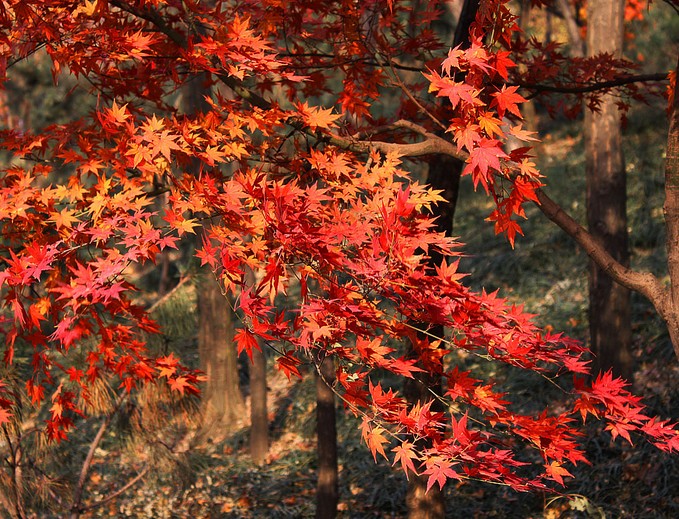Acer palmatum seed
Red Japanese Maple (Blood Leaf), Acer palmatum atropurpureum, tree Seeds
Hardy, Adaptable, Easy to Grow, Bonsai, Brilliant Fall Colors, Cold Tolerant
Red Japanese Maple features wine-red leaves in spring, sometimes fading to a reddish green in the heat of the summer sun, returning to a brilliant red in the fall.
Japanese Maple is a small deciduous tree of rounded or pyramidal habit prized for its fall colors. At maturity it can reach 15 to 25 feet, growing faster when young, slowing as it gets older. Japanese Maples are easy to care for and are very popular for bonsai. They perform well in containers and in the landscape. They are hardy, but grow best when planted in well-drained soil in a location protected from drying winds and where they will receive morning sun and afternoon shade.
Native to Japan, china and Korea, Japanese Maple can be trained as a multi-stemmed shrub or single-stemmed tree. General plant form is rounded to broad-rounded, often with low-branching. The canopy is wispy and delicate, and in some cultivars, weeping. It has slender, glabrous twigs and smooth gray bark. Branches tend to grow in horizontal layers, and often are contorted and twisted. The palmate leaves are 2 to 5 inches long and wide and deeply dissected with 5 to 11 lobes. The lobes are lance shaped, sharply pointed at the tips and doubly toothed on the edges. Small reddish-purple flowers in umbels bloom in mid spring. As with many maples, the flowers are rather attractive close up, but are not particularly showy from a distance. Flowers are followed by samaras (to 3/4” long) that ripen in September-October. Fall color includes shades of yellow, orange, red-purple or bronze. Cultivars are quite variable.
This is one of the most beautiful small trees for the ornamental landscape. It is perfectly suited as a specimen tree, an accent in a mixed border or in a container on the patio. It anchors the Japanese style garden. Many of the cultivars remain quite small and are especially useful in small gardens, rock gardens and for bonsai. The brilliant fall foliage lights up the garden and the slender twigs and contorted branches provide winter interest.

